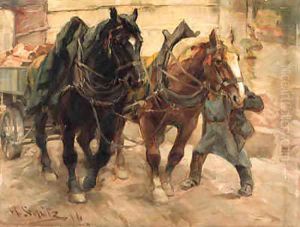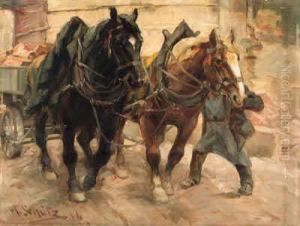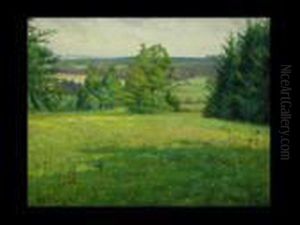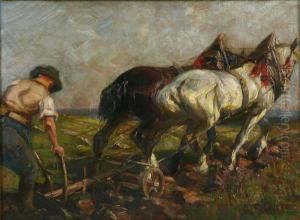Heinrich Schutz Paintings
Heinrich Schütz stands as a towering figure in the history of music, particularly in the realm of early Baroque composition. Born in Köstritz, Germany, on October 8, 1585, Schütz's early life was marked by an immersion in a vibrant cultural and musical environment. His talents were recognized early on, leading to patronage that allowed him to study in Venice with Giovanni Gabrieli, an influential composer of the Venetian School. This education notably shaped Schütz's compositional style, imbuing it with the rich polychoral traditions and the emotional depth characteristic of the early Baroque period.
Throughout his career, Schütz served in various prestigious positions, most notably as Kapellmeister at the court of the Elector of Saxony in Dresden for much of his life. This role placed him at the heart of German musical life, and he was instrumental in the development of a distinctly German Baroque style, integrating the Italian influences of his training with the traditional German choral and liturgical traditions. Schütz's work spanned a wide range of musical forms, including madrigals, symphonias, and, most importantly, sacred music, which constitutes his most significant contribution to the musical canon.
His compositions, particularly his settings of the Psalms of David, his Passions, and his three collections of Symphoniae Sacrae, are celebrated for their expressive depth and their innovative use of instruments to underscore the textual narrative. Schütz's ability to convey complex emotional and spiritual narratives through music was unparalleled in his time and has led to his recognition as a pivotal figure in the transition from the Renaissance to the Baroque period in music.
Despite the challenges of the Thirty Years' War and the subsequent economic and social upheaval, Schütz continued to compose and perform, leaving a legacy that would influence generations of composers, including J.S. Bach. Heinrich Schütz's death on November 6, 1672, marked the end of an era, but his compositions have endured, celebrated for their profound emotional depth and their pioneering role in the development of the German Baroque style. His work not only reflects the complexities of his times but also offers a timeless testament to the power of musical expression.







